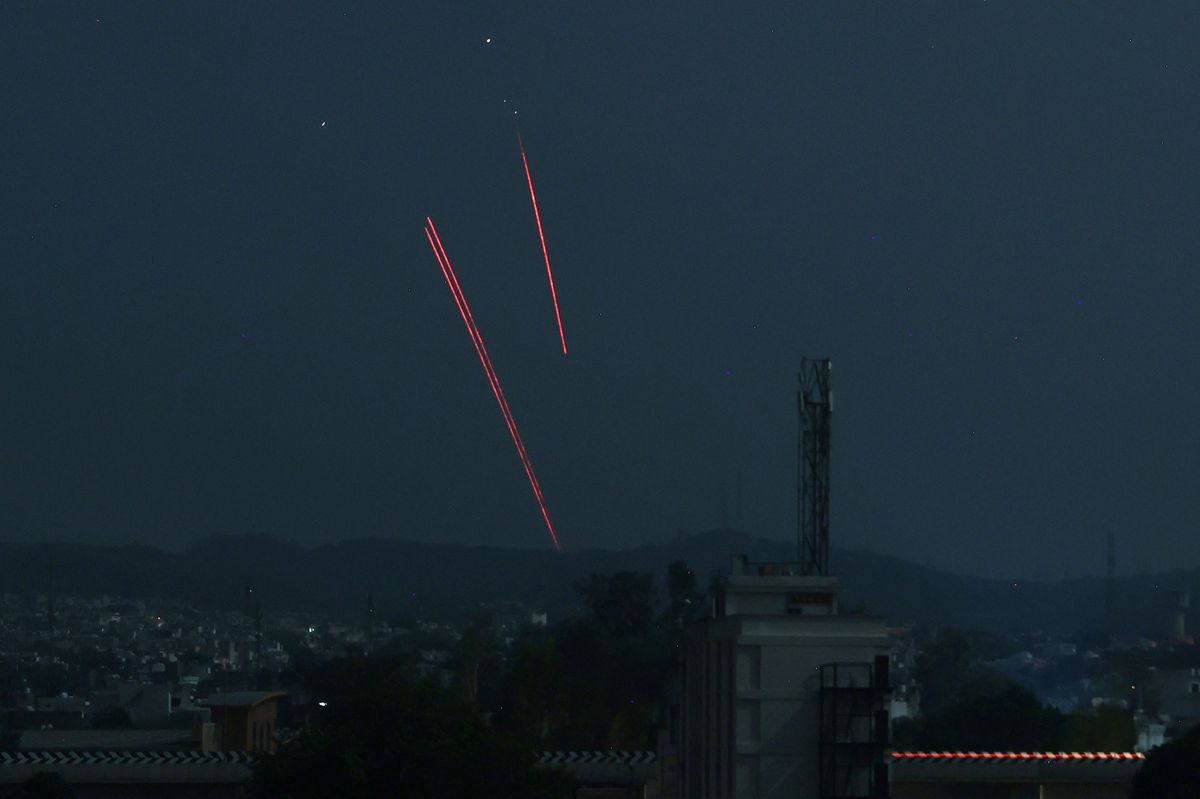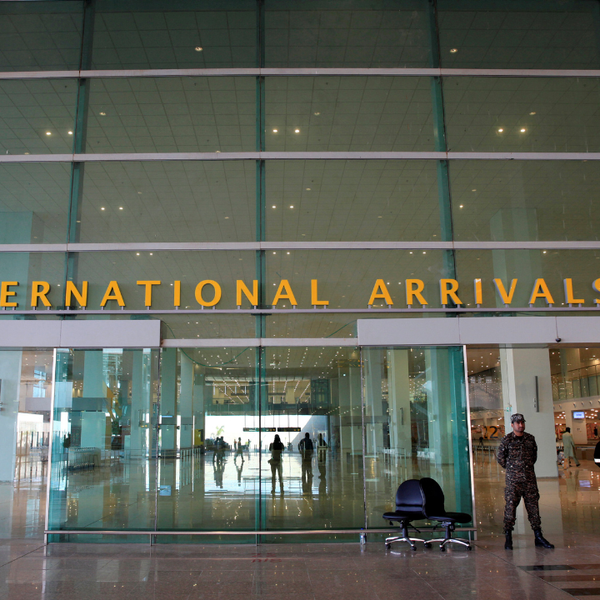Operation Bunyān-un-Marsūs: What targets Pakistan struck and how India reacted
The conflict escalated after Indian airstrikes on three key Pakistani airbases, while Pakistan’s retaliation sparked panic across several Indian cities

Aamir Abbasi
Editor, Islamabad
Aamir; a journalist with 15 years of experience, working in Newspaper, TV and Digital Media. Worked in Field, covered Big Legal Constitutional and Political Events in Pakistan since 2009 with Pakistan’s Top Media Organizations. Graduate of Quaid I Azam University Islamabad.

Trails from an Indian air defence system are seen above Indian-administered Kashmir during a Pakistani strike on May 9, 2025.
AFP
Tensions between Pakistan and India flared into a sharp aerial exchange on the night of May 9 and 10, marking one of the most serious escalations in recent years.
The conflict intensified when Indian aircraft launched air-to-ground missile strikes on three key Pakistan Air Force installations: Nur Khan Airbase, Mureed Airbase, and Shorkot Airbase.
Indian strikes trigger escalation
In response, Pakistan launched retaliatory strikes under what security sources later identified as "Operation Bunyān-un-Marsūs".
Here’s what we know so far:
Pakistan was the first to close its airspace in the early hours of Saturday as it began its counteroffensive.
Under Operation Bunyān-un-Marsūs, Pakistan targeted key Indian military sites, including:
- A BrahMos missile storage facility in Beas,
- The Udhampur Airbase, and
- The Pathankot Airfield
India has acknowledged Pakistan’s retaliatory actions, although the full extent of the damage remains unclear.
India responds: Claims of aerial intrusions
According to Indian media reports, widespread panic and fear gripped several Indian cities following Pakistan’s retaliatory strikes.
Pakistani security sources revealed that Operation Bunyān-un-Marsūs also included strikes on the Indian brigade headquarters and a supply depot in Uri, using Fateh-1 surface-to-surface missiles.
The missiles, they said, were symbolically named after children who lost their lives during the recent cross-border tensions. The sources further confirmed that drones were also deployed as part of the operation.
Meanwhile, in a special briefing held in New Delhi, Indian External Affairs Ministry spokesperson Colonel Sophia Qureshi confirmed the attacks, saying:
“India neutralized several threats, but Pakistan attempted aerial intrusions at over 26 locations and caused damage to our equipment and personnel at Air Force bases in Udhampur, Bhuj, Pathankot, and Bathinda.”
Colonel Qureshi also claimed that the Pakistan Army has continued its aggressive posture along the western front, targeting Indian military infrastructure using UCAVs (Unmanned Combat Aerial Vehicles), long-range weapons, loitering munitions, and fighter jets.
Colonel Qureshi further emphasized that drone incursions and heavy-caliber shelling had occurred along the Line of Control (LoC).
“I would also like to highlight that at 1:40 a.m., Pakistan launched a high-speed missile aimed at an airbase in Punjab,” she stated.
In addition to earlier targets, Pakistan also struck Indian Air Force bases in Srinagar, Awantipora, and Udhampur, according to Indian officials.
Concluding the briefing, Indian authorities reiterated their stance:
“India seeks no escalation -- provided Pakistan exercises restraint.”







Comments
See what people are discussing